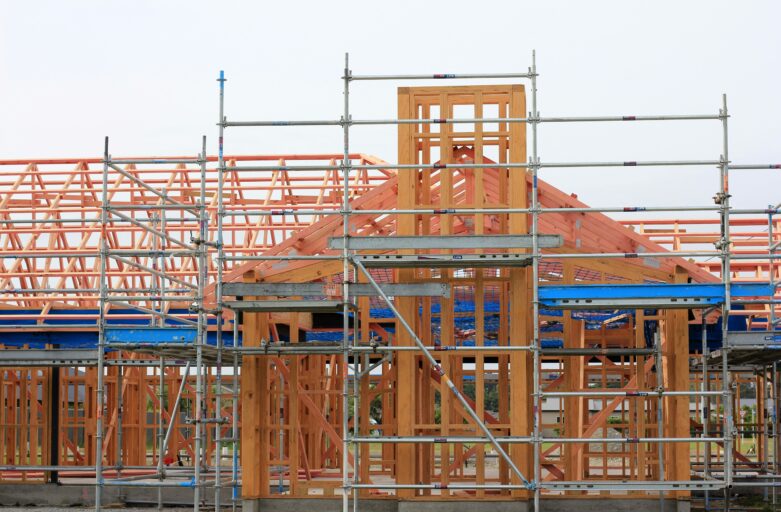Facing Mortality: Understanding Our Fear of Death
Death is a universal human experience, yet the way we perceive and approach it can vary greatly across different cultures. In Western societies, there is often a deep-seated fear of death, stemming from Judeo-Christian beliefs that portray death as either an end or a mysterious passage to an unknown afterlife. This fear can manifest in various ways, from avoidance of discussing death to a reluctance to accept the aging process.
Some of the reasons for this fear may include:
- Uncertainty about the Afterlife: While Christians believe in the promise of eternal life, the specifics of what happens after death are not entirely clear. This uncertainty can lead to fear and anxiety about the unknown.
- Attachment to Earthly Life: Despite the promise of an eternal life in heaven, many Christians may still have strong attachments to their current life on earth, including relationships, possessions, and experiences. The idea of leaving these behind can be unsettling and lead to fear of death.
- Fear of Judgment: Another aspect of Christian belief is the concept of judgment, where individuals are held accountable for their actions in life. This fear of being judged and not living up to the expectations of faith can contribute to fear of death.
- Cultural Influence: Western societies, including those influenced by Christianity, often have a cultural fear of death that extends beyond religious beliefs. This fear can be perpetuated by media, societal norms, and personal experiences.
- Human Nature: Regardless of religious beliefs, the fear of the unknown and the instinctual drive for self-preservation are deeply ingrained in human nature. These instincts can manifest as a fear of death, even among those who believe in an afterlife.
Celebrating the Cycle of Life
Contrast this with cultures that embrace death as a natural part of life. For example, the ancient Egyptians believed in an afterlife and meticulously prepared for it, as shown by their elaborate burial practices and beliefs. Similarly, cultures like the Balinese and the Mexican Dia de los Muertos celebrate death as a continuation of life and honor their ancestors through vibrant festivals and rituals.
In many cultures, including traditional societies and some Eastern cultures, there is a different perspective on aging and the role of the elderly. These cultures often value the wisdom and experience that comes with age, and older individuals are revered for their knowledge and contributions to the community. As a result, it is common for the elderly to step back from certain roles and responsibilities, but not necessarily due to fear of death or decline. Instead, stepping back in these cultures is often seen as a natural progression of life, where older individuals are given the opportunity to pass on their knowledge and wisdom to the younger generations. This passing of the torch is viewed as essential for maintaining the cultural identity and continuity of the community.
In the past, some cultures embraced a practice where the elderly voluntarily leave the group or community to die, viewing themselves as a burden or no longer useful due to their age or declining health. This practice, known as “senicide” or “geronticide,” is rare and varies in its cultural context and reasons.
A few examples are:
- Inuit: Among some Inuit communities, there was a traditional practice known as “Eskimo ice floe abandonment,” where elderly individuals would be left on an ice floe to die or be taken by the elements. This practice was believed to be a way for the elderly to avoid being a burden on the group during times of scarcity.
- Aboriginal Australians: Some Aboriginal Australian tribes practiced a form of senicide where elderly individuals would voluntarily wander off into the wilderness to die. This was seen as a way to maintain the resources of the group and avoid burdening others with care.
- Japanese: While not as extreme as senicide, in Japan there is a cultural expectation for the elderly to step back and become more independent, often living in retirement communities or nursing homes rather than with their families. This can be seen as a way to avoid burdening the younger generation with care responsibilities.
It’s important to note that these practices are not universal, nor are they representative of all individuals within these cultures. They are complex cultural practices influenced by a variety of factors, including beliefs about aging, community resources, and societal norms. In modern societies, there are social support systems and cultural shifts that aim to provide care and support for the elderly rather than viewing them as a burden to be discarded.
Western Obsession with Youth and the Medicalization of Aging
The impact of cultural perspectives on death extends beyond just the end of life. In Western societies, the fear of death can lead to a focus on material possessions and a constant pursuit of youth and beauty, while cultures that embrace death often have a more holistic view of life, prioritizing harmony with nature and community over material wealth.
In our Western culture, the fear of death and the desire for eternal youth have contributed to the growth of the medical and pharmaceutical industries. This fear creates a demand for products and services that promise to prolong life and delay the effects of aging, often leading to the pursuit of profit at the expense of ethical considerations and genuine well-being.
For example;
- Proliferation of Anti-Aging Products: The fear of aging and death has led to the development and marketing of a wide range of anti-aging products, from skincare creams to dietary supplements, that promise to reverse or slow down the aging process. Many of these products make exaggerated claims and offer false hope to consumers looking for a quick fix.
- Medicalization of Aging: Western society often views aging as a medical problem that needs to be treated and managed, rather than a natural part of life. This has led to the overmedicalization of aging, with older adults being prescribed numerous medications and undergoing unnecessary medical procedures in the pursuit of prolonging life.
- End-of-Life Care and Hospice: The fear of death has also influenced the way Western society approaches end-of-life care. There is often a focus on aggressive medical interventions to prolong life, even when the quality of life is greatly diminished. This has led to a lack of emphasis on palliative care and hospice services, which focus on providing comfort and dignity to the dying.
- Profit-Driven Healthcare System: The profit-driven nature of the healthcare industry in Western countries has also contributed to the emphasis on prolonging life at all costs. Pharmaceutical companies, medical device manufacturers, and healthcare providers stand to profit from the continued medicalization of aging and the fear of death, leading to overuse of medical services and unnecessary treatments.
Finding Harmony in Acceptance
The fear of death in our culture has created a fertile ground for the medical and pharmaceutical industries to thrive, often at the expense of genuine well-being and ethical considerations. Studies have also suggested that a fear of death can have negative effects on health and well-being, contributing to increased stress and anxiety. Embracing death as a natural part of life can lead to a more positive outlook, potentially improving overall health outcomes. By reflecting on the perspectives of cultures that embrace death, we can gain a greater appreciation for the natural cycle of life and perhaps find a more fulfilling way to approach our own mortality.
Join the discussion!
Watch our video here, or watch on our YouTube Channel.
Your questions and comments are always welcome! Contact us to learn more.












